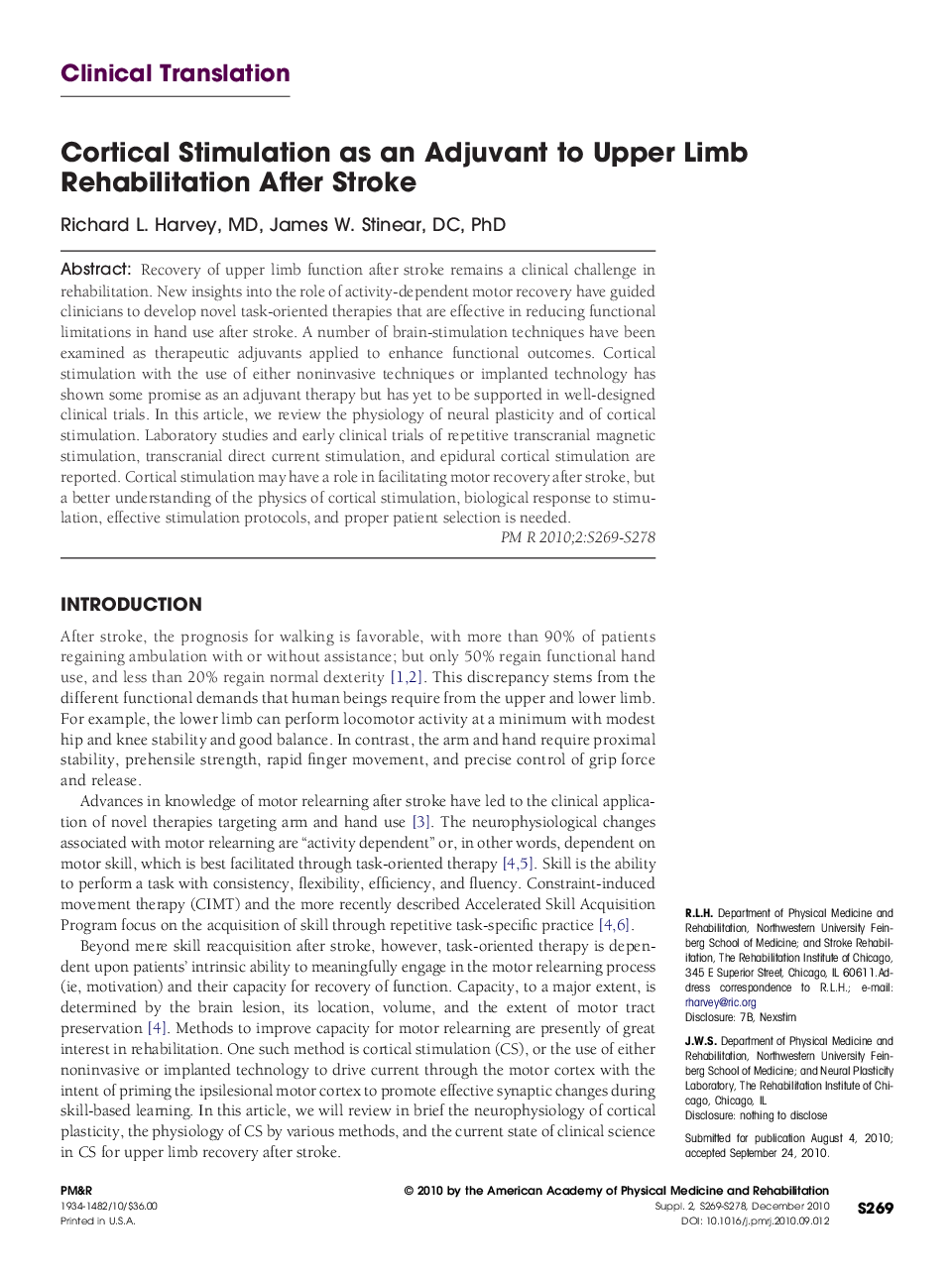| Article ID | Journal | Published Year | Pages | File Type |
|---|---|---|---|---|
| 2717642 | PM&R | 2010 | 10 Pages |
Recovery of upper limb function after stroke remains a clinical challenge in rehabilitation. New insights into the role of activity-dependent motor recovery have guided clinicians to develop novel task-oriented therapies that are effective in reducing functional limitations in hand use after stroke. A number of brain-stimulation techniques have been examined as therapeutic adjuvants applied to enhance functional outcomes. Cortical stimulation with the use of either noninvasive techniques or implanted technology has shown some promise as an adjuvant therapy but has yet to be supported in well-designed clinical trials. In this article, we review the physiology of neural plasticity and of cortical stimulation. Laboratory studies and early clinical trials of repetitive transcranial magnetic stimulation, transcranial direct current stimulation, and epidural cortical stimulation are reported. Cortical stimulation may have a role in facilitating motor recovery after stroke, but a better understanding of the physics of cortical stimulation, biological response to stimulation, effective stimulation protocols, and proper patient selection is needed.
